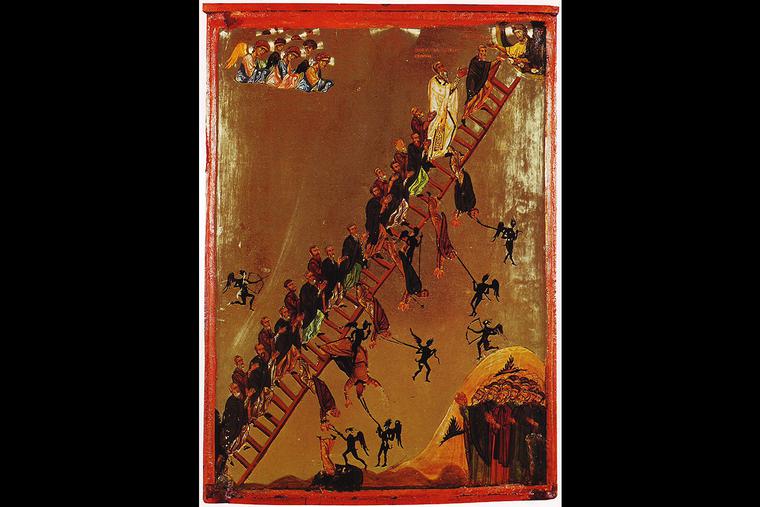‘The Ladder of Divine Ascent’ Is a Perfect Guidebook for Lent
This work has been read by Eastern monastics for centuries and it has much spiritual wisdom to impart to us today.

In the midst of our busy schedules, it can be difficult to know what our spiritual reading ought to be during the Lenten season. The Byzantine tradition lifts up one particular book for the faithful to consider during the Great Fast (as Lent is known in the East). It is The Ladder of Divine Ascent by St. John Climacus. This work has been read by Eastern monastics for centuries and it has much spiritual wisdom to impart to us today. I would challenge my readers to consider The Ladder as a “guidebook” for your Lenten journey.
The Ladder of Divine Ascent has 30 “steps” or “rungs” to describe the journey of the soul toward God. These steps are particularly aimed at monastics but the spiritual treasures in each step apply to every state in life. St. John does not write in a modern manner, with introduction, body, and conclusion; rather, each paragraph in the step is a stand-alone thought. This makes The Ladderperfect for quick reading. It can also be read randomly, perhaps turning to a section of interest or a section covering a particular vice that you struggle with. What you’ll encounter is monastic wisdom for growth in the spiritual life. You’ll read stories of St. John’s encounters with other monasteries and other monks. For example, you’ll read about Isidore, a proud man of magisterial rank, who was told by the Abbot of a monastery that he wished to enter, to make a prostration to everyone he encountered with a loud request to the stranger, “Pray for me, father, I am an epileptic” (Ladder, 4:23). In this way, Isidore was broken of the pride of his former high rank and was accepted by the brethren.
In “Step 5” you read about one monastery called “The Prison,” an ancient monastery for the rehabilitation of the worst sinners. In reading it, there is a temptation to say with the Pharisee, “God, I thank you that I am not like other people: thieves, rogues, adulterers, or even like this tax collector” (Luke 18:11), but with the eyes of faith we read and are convicted of the need of true repentance — and isn’t that what Lent is really about! You’ll read of the need to renounce the world and make room for Christ alone. You’ll read of the dangers of avarice and lust and the need for meekness and humility. You’ll read of the gift of “stillness,” the gift of a soul unmoved by bodily passions and focused on the love of God alone. There are so many treasures in The Ladder of Divine Ascent that I never tire of going back to it year after year.
In reading The Ladder we ought not to be intimidated by the monks. As you read you see how truly human they are, working out their own sins and vices with the help of God’s grace. In a sense, Lent makes us all monastics. It’s a season that we’re called to imitate the monastic virtues of prayer, fasting and almsgiving. The benefit of reading some monastic literature for Lent is to reap the experience of those who have chosen to live their life in a perpetual Lent. We have 40 days of opportunity during the Great Fast to make a change. Forty days to grow; to produce some fruit for the Lord. Now is an appropriate time to pick up some monastic wisdom. Consider taking up The Ladder for your Lenten journey and you won’t regret it!
*There is an edition of The Ladder of Divine Ascent that is published as part of the Classics of Western Spirituality Series and a beautiful edition published by Holy Transfiguration Monastery, which I highly recommend.
- Keywords:
- lent
- spiritual reading
















